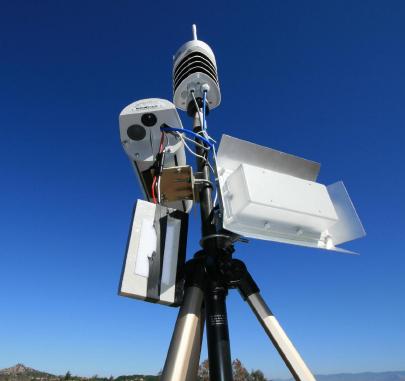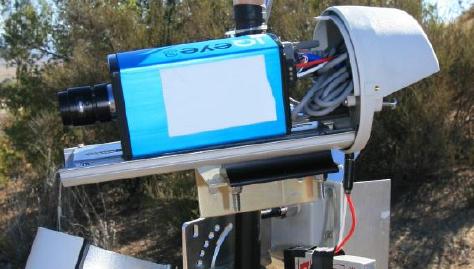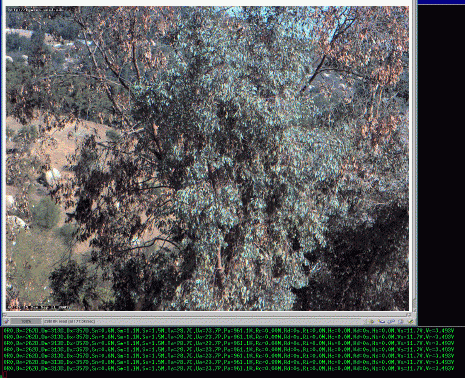
|
|
September 11, 2007
Experimental setup for ad-hoc long-distance wireless camera and weather sensor deployment
With HPWREN's interest in integrated systems, an attempt was made to create a solid-state integrated wireless camera and weather station setup, with the potential for a data communication reach of several miles. HPWREN staff had tried a similar setup already years ago, utilizing the serial line input of a wireless IQeye3 camera. The activity was discontinued then, in large part due to the less than straightforward communication protocol used to get the weather data from the sensor, with often difficult to obtain documentation about the protocol. For ad-hoc deployments, instruments with moving parts such as wind cups and a wind vane are also somewhat unattractive, as those are often pieces sticking out that can easily break off during transport. Integrated weather station solutions that accomodate multiple sensors, are all solid state, and have a documented digital data output are available now. The example experimented with here is a Vaisala WXT510, which is an about $2,000 instrument. Unfortunately the instrument is not seem to be extendable, to accomodate things like fuel moisture and fuel temperature, but otherwise supplies various needed metrics.
It was possible to connect the WXT510 serial output to the serial input of an IQeye3 camera. The camera also accomodates an 802.11b wireless card with an external-antenna connector. This allowed adding a directional antenna for long distance communication outside of the camera enclosure. Both the IQeye3 and the WXT510 have a very wide input voltage range, easily allowing them to be powered by an unregulated 12 or 24 Volt battery. The equipment cost for the whole setup is below $4,000. Integrated solutions such as this could be useful for many applications. A possible example application could be ad-hoc deployable stations for thresholded fire perimeter alarms, like for the firefighter Incident Command Posts which HPWREN deploys data communications for. /news/041106.html shows an example where firefighters are already receiving automated pager alarms in real time by a computer program working off thresholded data, which could be extended to ad-hoc setups such as this.
|



